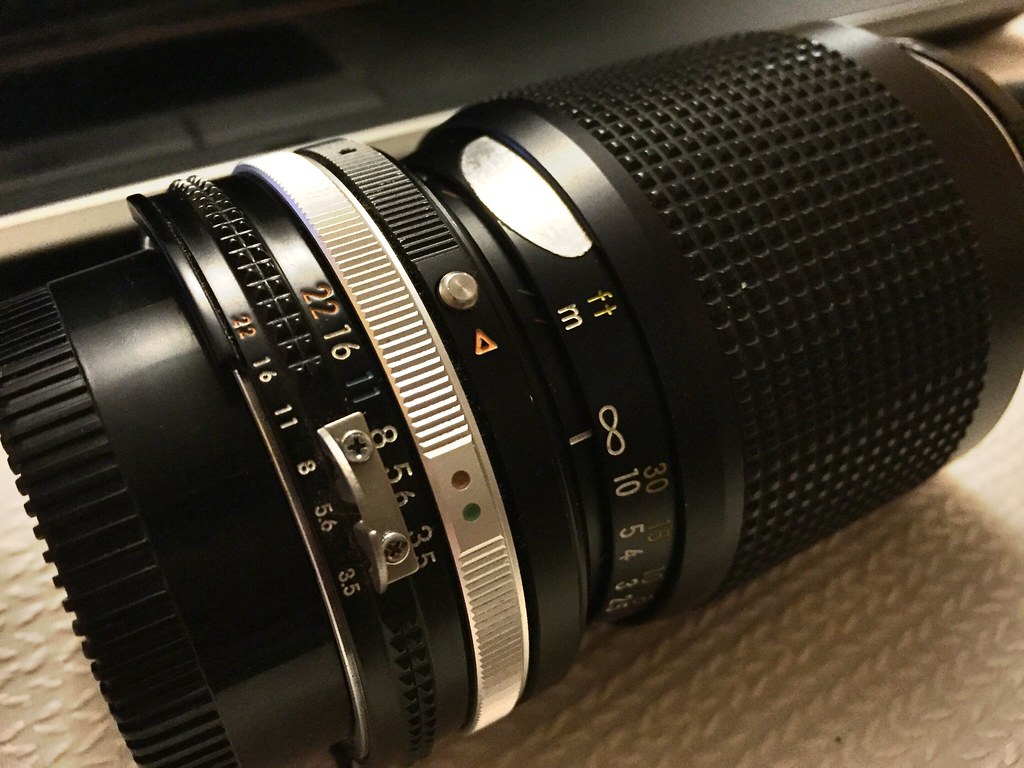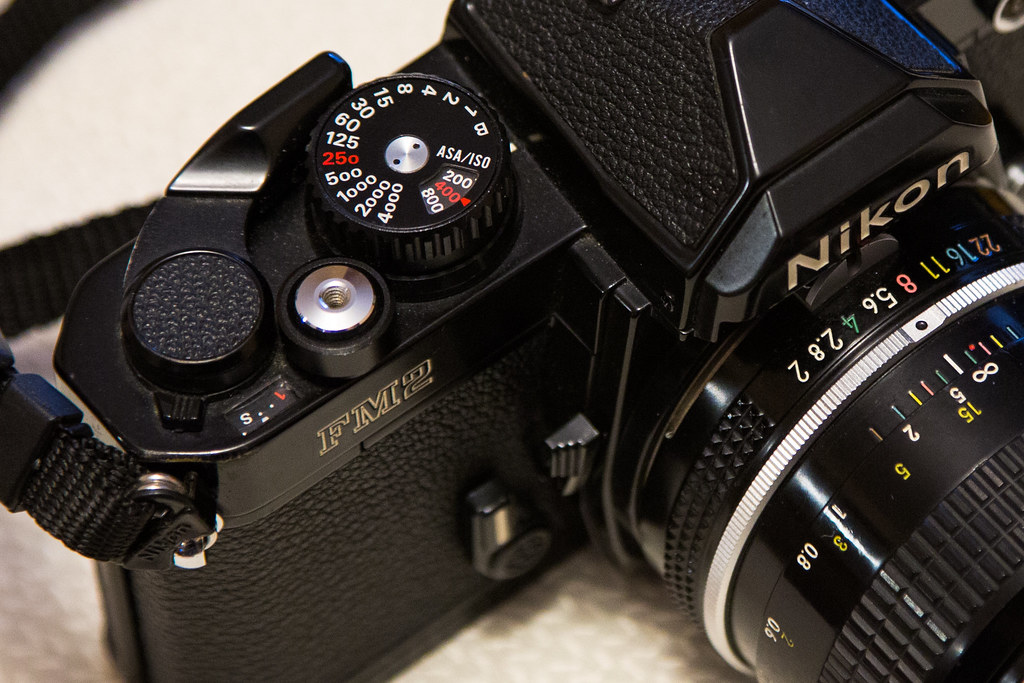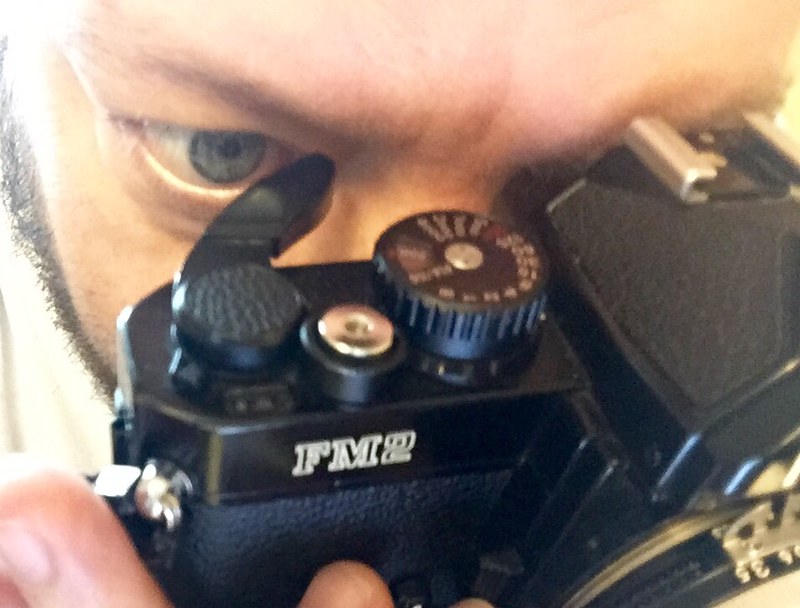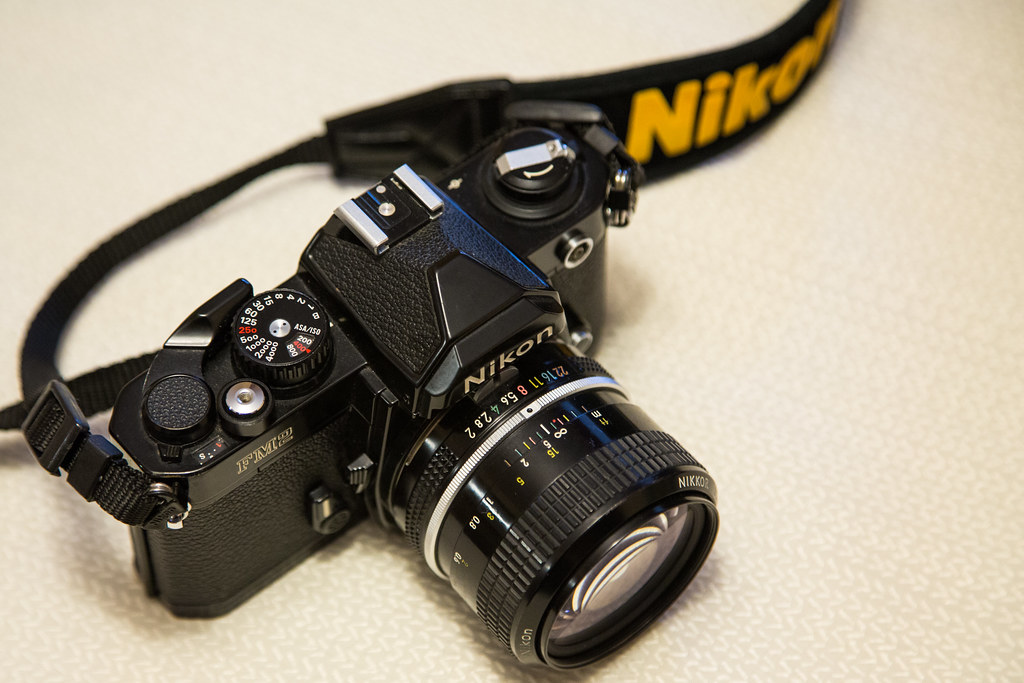Early FM2n models saw only a couple of changes over the FM2, the most obvious being an update to the maximum flash sync speed from 1/200s to 1/250s. A new mirror stop was also added to the FM2n, as well as an extra light trap in the mirror box. Later FM2n's (from 1989 onward) also saw the titanium honeycomb-patterned shutter replaced with a smooth aluminum one.
I love mechanical cameras, and especially mechanical cameras that changed the game. I wasn't going to pass up an opportunity to own one of these if I could find an affordable copy in good shape. And I did! This FM2n is the second Nikon to become a part of my collection, after the Nikkormat FT2 (a distant predecessor in the mid-range Nikon lineup). Purchased off of Craigslist for a total of $100 with a Nikkor 35-105mm f/3.5-4.5 attached, it looks like I ended up with a pretty good deal since the camera and lens work flawlessly and show almost no signs of use.
So what do I get for my hundred bucks? Well, what I get is a masterpiece in design and function, with only a couple of minor flaws.
The Build
The FM2n is no lightweight by modern (or even contemporary) standards. Yet the strong copper-silumin body, weighing in at 540 grams, is nearly 40% lighter and a little smaller than the previous generation's Nikkormat FTs. The focus on a quality build is obvious, with tight tolerances all around. The advance lever clicks solidly into its open position, and winding provides that fantastic well-lubricated ratcheting sound. The shutter speed dial has no play in the movement, rotating positively from one setting to the next. The takeup spool works much better than the one in my FT2, contributing to a much more positive feel when the film leader hooks to it. There is very little question about whether or not the film is correctly loaded.
It's a testament to the incredible build quality of the camera that it's able to operate in temperatures ranging from -40°C to 50°C (-40°F to 122°F). To put that in perspective, the recommended operating environment for the Nikon D5 (the new-as-of-this-posting flagship Nikon DSLR costing $6500) is 0°C to 40°C (32°F to 104°F) (although to be fair I don't believe the official recommended operating range was ever published for the FM2/FM2n).
For almost every camera I own with a fully mechanical shutter, at some point the low shutter speed range starts to suffer. Over the decades, 1 second becomes 1.5 seconds, half a second becomes 3/4 of a second, etc. Of course, this can be fixed with a rather expensive service, but generally I'll just live with it (being half a stop over doesn't bother me, I just avoid slide film in those cameras). In this case, however, the FM2n still seems to be pretty dead on after about 25 years.
The Features
 |
| Viewfinder display showing shutter speed (left), aperture (top), and "correct" exposure (right). |
Three lights are visible in the display to show you how the metered scene corresponds to the camera's current settings. These lights are "+", "O", and "-". If the camera is set to the exact value of the meter's recommendation, "O" is displayed in the viewfinder. If the camera's settings would result in one-fifth to one stop overexposure according to the meter, "+" and "O" are both displayed. Overexposure one stop or greater will result in just a "+" display. The same pattern holds for underexposure and the "-" display.
 |
| Smaller aperture numbers close to the base on AI lenses are reflected into the viewfinder |
Focus is achieved with a standard split-image rangefinder and microprism collar. Lenses down to f/5.6 can still use the rangefinder, albeit with some difficulty.
The viewfinder itself is bright, and the focus aids are slightly larger than with some other cameras that I've used. This helps with the darker lenses and when using filters that reduce the light.
 |
| Shutter speed and ISO dial on top, self-timer and depth of field preview on front panel |
In the Field
Aside from being lighter and a little smaller than the Nikkormat FT2, the FM2n is also easier to use. Nothing really gets in your way. The large shutter speed dial is knurled and unmistakable, allowing you to adjust it by feel without having to take your eye away from the viewfinder. The metering symbols in the viewfinder are bright and visible in all lighting conditions, although the same can't always be said of the shutter speed and aperture information, the former being dependent upon the brightness of the scene in the viewfinder and the latter being dependent upon ambient light reaching the top of the lens barrel under the lip of the pentaprism housing.
 |
| Left-eye dominance and Nikon film advance levers. The struggle is real. |
The film advance lever serves another purpose besides the obvious one. When the lever is flush against the body, metering is turned off to conserve battery power, and the shutter release is locked to keep it from being triggered accidentally. By pulling the lever out to its first click, you release the shutter lock and enable the metering, which can then be started with a half-press of the shutter button. I like the safeguards but the implementation is not my favorite. As with many old Nikons, the manufacturer seems to have forgotten the left eye dominant segment of the population who are now forced to meter, compose, and focus with a big stick pointing out just in front of their right eyeball.
Metering seems to be consistent and accurate, at least within the capabilities of a center-weighted average system. It can sometimes be difficult to achieve what the meter suggests is "perfect" exposure because the aperture and shutter speed values are in full stops. But as long as you stay within the "slightly over" or "slightly under" display you should be good to go, and you can choose which one is appropriate based on the subject and lighting conditions.
 |
| Solid metering ability |


A great camera it is for sure....................
ReplyDelete